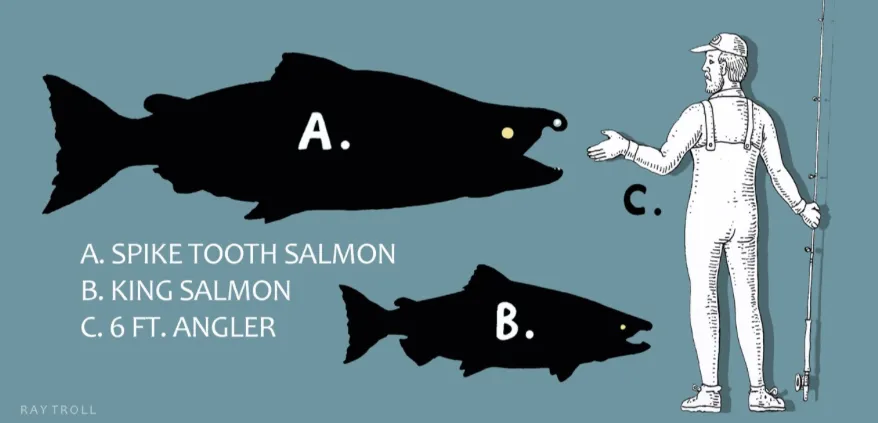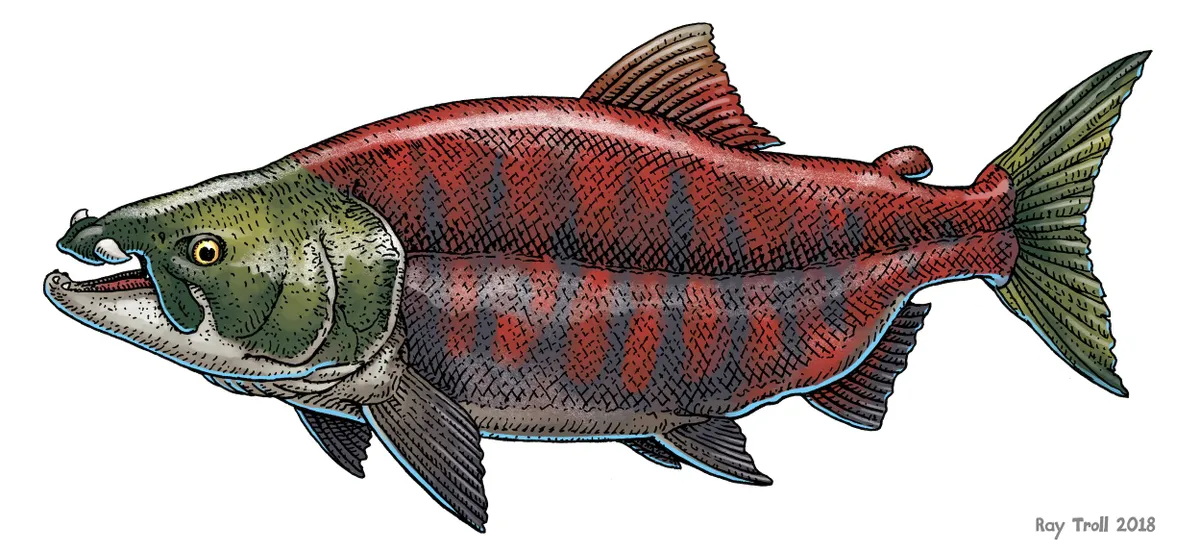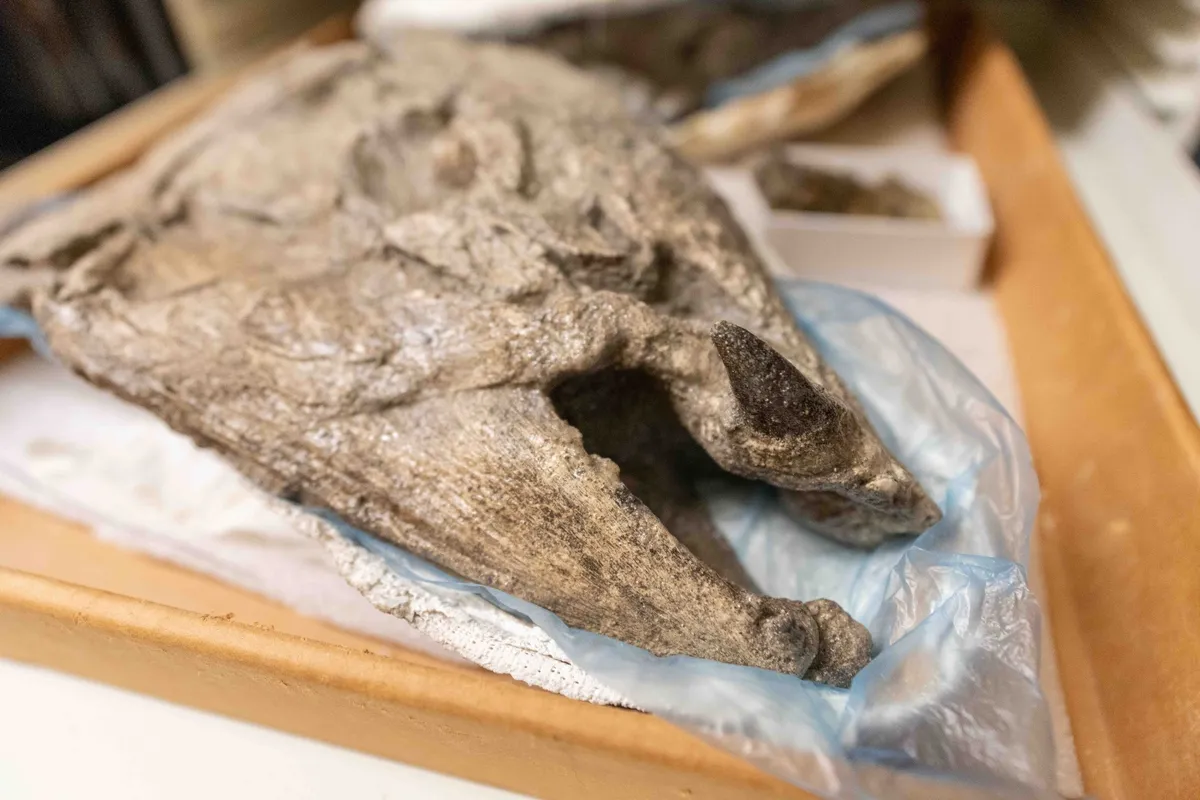Oncorhynchus rastrosus was an enormous species of salmon that once roved the seas around North America.
Estimated to reach lengths of up to 2.7 metres (8.9 feet) and weigh up to half a tonne, this titan of the ocean was the largest member of the Salmonidae family that has ever lived.
Its size was backed-up with sharp teeth. Until now, these were thought to arch backward into the creature's mouth, like fangs or sabres.
But a new study, led by Kerin Claeson from the Philadelphia College of Osteopathic Medicine in the USA, and published in the journal PLOS ONE, suggests that the front teeth of Oncorhynchus rastrosus in fact projected out from the sides of its mouth, more like the tusks of a warthog.

Sabre to spike
Since it was first described in the 1970s, researchers have always thought the oversized front teeth of Oncorhynchus rastrosus pointed backwards into the mouth, like those of the iconic sabre-toothed tiger, leading to the nickname 'saber-toothed salmon'.
According to the study, this was largely because fossils of the teeth were found separately from the rest of the skull.

But through new CT scans and analysis of various fossils – including new specimens recovered from the Gateway Quarry in Oregon – researchers from America believe that the teeth instead pointed sideways out of the fish’s mouth. As a result, the paper suggests that the species should be renamed the 'spike-toothed salmon'.
Claeson, who led the study, says that the teeth are akin to those of a warthog. "No other living (or extinct) salmon possesses teeth with such an unusual orientation, which naturally had us asking, 'Why did they evolve this way?'"

"We have known for decades that these extinct salmon from Central Oregon were the largest to ever live," says Claeson. "Discoveries like ours show they probably weren't gentle giants.
"These massive spikes at the tip of their snouts would have been useful to defend against predators, compete against other salmon, and ultimately build the nests where they would incubate their eggs.
"They could have used their massive body muscles to yield incredible strength to those spikes. Imagine a one-pound geology hammer, sharpened, and wielded by 200 pounds of lateral muscle. Such spikes, wielded with such force, could have easily killed, or injured a shark, dolphin, sea lion or rival spike-tooth salmon."

Both females and males are thought to have had these lateral teeth, says Brian Sidlauskas, professor and curator of fishes at Oregon State University. “We also stress that females and males alike possessed the enormous, tusk-like teeth. Therefore, the sexes were equally fearsome.”
The authors think the teeth probably weren’t used for catching prey. Oncorhynchus rastrosus is believed to have been a filter-feeder, with a diet comprising mostly of plankton.
Edward Davis, associate professor of earth sciences at the University of Oregon and director of Condon Collection at the UO’s Museum of Natural and Cultural History, adds: “I’m delighted that we have been able to put a new face on the giant spike-tooth salmon, bringing knowledge from the field in Oregon to the world.”

The paper – From sabers to spikes: A newfangled reconstruction of the ancient, giant, sexually dimorphic Pacific salmon, †Oncorhynchus rastrosus (SALMONINAE: SALMONINI) – is freely available article in PLOS ONE. Authors: Claeson KM, Sidlauskas BL, Troll R, Prescott ZM, Davis EB
Main image: Spike tooth profile of the giant prehistoric salmon. Credit: Ray Troll
More amazing discoveries:
- Giant crocodile ancestor with epic 'suit of armour' identified in Texas
- “This place was just crazy rich with dinosaur footprints”. Scientists buzzing after huge prehistoric discovery in Alaska
- Enormous prehistoric sea lizard with dagger-like teeth discovered in Morocco
- Monstrous pre-historic worms discovered in Greenland
